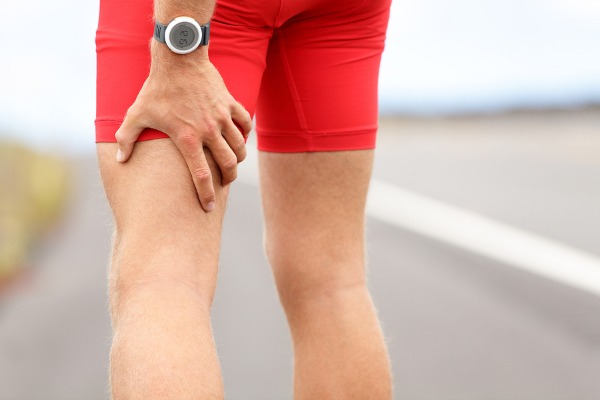You would have had or known someone affected by sciatica. It is a fairly common disorder that affects approximately 40% of the population at some point in their lives. However, only about 1% have coexisting sensory or motor deficits. Sciatic pain has several root causes and treatment may hinge upon the underlying problem.
Sciatica is a term that describes a type of pain that begins in the low back or buttock and that extends down the back of the thigh to the foot. It can also have associated neurological symptoms with it such as paresthesia (tingling or numbness), muscle weakness or even in the worst case scenarios muscle wasting.
These symptoms can occur when a nerve is compressed either at the origin/root or along its path in the leg from a muscle or adhesions. There are multiple reasons for a nerve to become compressed but the most common is from a lumbar disc herniation. Repeated mechanical stress to a spinal disc can cause the outer layers (annulus fibrosis) of the disc to tear which in turn allows the inner spongy substance (nucleus pulpous) to bulge, herniate or even in the most severe case sequestrate (break off) into the spinal canal and the exiting foramen of the vertebral column.
Lumbar disc herniation’s occur most commonly at the weakest point of the disc, which is the area where the nerve exits from the spinal cord. When a disc is herniated in this area, it often directly contacts the nerve root which is exiting through the space, hence compressing the nerve and eliciting neurological symptoms in the leg. The most common areas of the back to have disc problems are L4/5, and L5/S1. And these exiting nerve roots form the sciatic nerve which extends down the back of the thigh where it branches into two main branches into the foot at the knee called peroneal and tibial nerve. Hence this is why pain the back of the leg is called sciatica.
In the past and even today, the common terminology is sometimes to say that a ‘DISC SLIPS’ out and needs to slip back in. Disc DO NOT SLIP!!! When damaged they produce an inflammatory response, which causes swelling in the area, and depending on the degree of damage is to how much pain and neurological symptoms there will be in the leg.
Sciatica’s main causes are
1. Lumbar disc derangement such as a bulge or herniation;
2. Spinal degeneration such as osteoarthritis;
3. Sacroiliac joint sprain/strain;
4. Muscular spasm and compression. Most common site is under the piriformis muscle;
5. Trigger point referral especially from the gluteus medius muscle
6. Hip joint osteoarthritis;
7. Space occupying lesion such as a spinal cord tumor.
In the first 6 cases depending on the degree of compression of the nerve, conservative management approaches have been shown to be successful in alleviating the symptoms of sciatica and helping the individual to restore their quality of life.
So how to treat Sciatica?
1. Firstly, you need to acknowledge that the problem will not be fixed, cured or resolved overnight. The body needs time to heal. If you break a leg, you are in plaster for at least 6 weeks. A mild disc will take typically 2-4 weeks, moderate disc typically 4-6 weeks and a severe disc typical 8-12 weeks until you start to feel normal or confident in moving again. Realistically, if there is sciatica that means there is at least moderate pressure and damage has been done.
2. Secondly, we aim to achieve some pain relief and control the inflammatory process if the pain and symptoms have only just begun. Here we can use Ice to manage the swelling and heat to try and relax the muscle spasms. We also have 10,000 IU of a high quality fish oil and curcumin as a natural way of reducing inflammation and pain in the body. There are NSAIDS and pain killers on the market however they carry risks and have cause potential side effects to our liver and gastrointestinal tract.
3. Thirdly, we want you to try and keep moving as much as possible. This doesn’t mean go and run marathons, but to keep the lumbosacral (lower back) and hips moving within reason. I encourage hip circles, posterior pelvic tilts and supine bridges within a pain free range. This range might only be a few degrees of movement but it IS movement. It keeps the intracapsular ligaments and spinal stabilizers active which can lead to bigger and better movements in the future.
4. Stretching the affected muscles in the area such as the piriformis (located deep in the buttock), gluteus maximus and inner hip muscles to help lengthen the muscle and keep them engaged;
5. Following this you need to find a practitioner, being a Chiropractor, Physiotherapist, or Acupuncturist to help relieve the symptoms and start to help provide movement to the restricted biomechanical joints, relieve muscle spasms and help with an individualized exercise/rehabilitation program tailored to suit this particular problem.
6. Decompression devices such as an inversion table, boots or manual traction can help reverse the effects of the compressive forces of gravity and open the space in a small amount to help alleviate the pressure of the nerve by a few millimeters which can lead to a reduction in pain;
7. Swimming in a pool can be useful as well however we do not recommend breaststroke or butterfly. You can use a device called an aqua jogger to help try and provide that gravity free environment and pain relief.
8. If this doesn’t work and you have given the body the recommended time to heal itself or if there is neurological compromise and symptoms are worsening, a consultation with a surgeon is what is required.
If you would like more information or would like to book an appointment at Neurohealth Chiropractic – please call the clinic on 9905 9099 or email us admin@neurohealthchiro.com.au or fill in the contact form from our website www.neurohealthchiro.com.au
Sign up to receive Neurohealth Chiropractic’s Free monthly health newsletter on the Right Hand Side of this page. Filled with great information and lots of easy health tips to keep you at Optimal Health!




